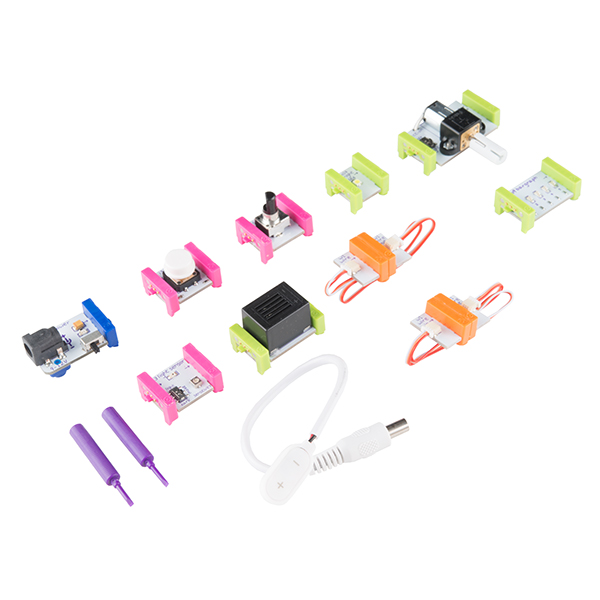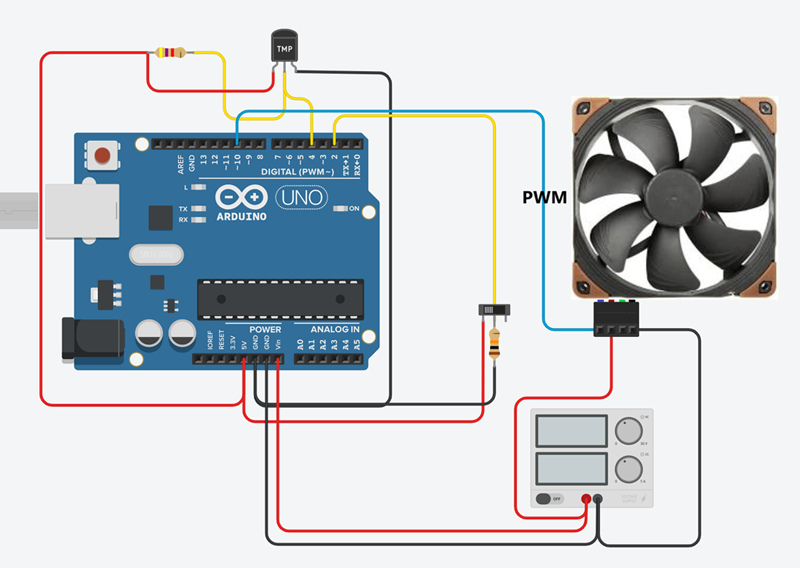littleBits

littleBits are small electronic modules that are organized by basic behavior and snap together with magnets. This enables rapid prototyping of circuits and devices without needing to understand Electrical Engineering.
What You Need To Know:
- littleBits are organized into 3 color coded basic behaviors: Pink Inputs, Green Outputs and Orange Wires.
- All circuits need to start with Blue Power connected to a USB Battery pack and the bits connect in a left to right direction.
- Pink Inputs trigger actions to occur on Green Outputs. An example would be a Button (input) being pressed causing an LED (Light Emitting Diode) (output) to turn on. Another example is a Dimmer (input) controlling the speed of a Motor (output). Orange Wires can be used to extend the distance between bits or to split a signal from an input to connct to multiple outputs.
- littleBits can mount on baseplates for increased stability and/or adapter plates to connect to LEGO bricks for more complex devices.
Accessories
- Getting Started
- Class Ideas
- Talk To Us
Schedule a faculty consultation to discuss how it could be used in your course.
FAQs
Which littleBits modules are available at Maker Commons?
All currently released littleBits modules are available at the Maker Commons and we’re always on the look out for new releases to add to our library!
I'm not done with my littleBits project yet. Can I save my work and come back later?
If the littleBits are not currently in high demand from other classes, please ask a consultant for a project box to save your work for just a few days.
Can I take my littleBits project with me to class?
No, littleBits can’t leave the Maker Commons, but you can record a video of your invention either on your phone or within our Studio One.
Interested in using this technology?
See class projects that have used Maker Commons resources at Penn State and get inspired by real world examples of these tools in various industries. Talk to a consultant to discuss your ideas and develop a plan to integrate the technology into your curriculum.


